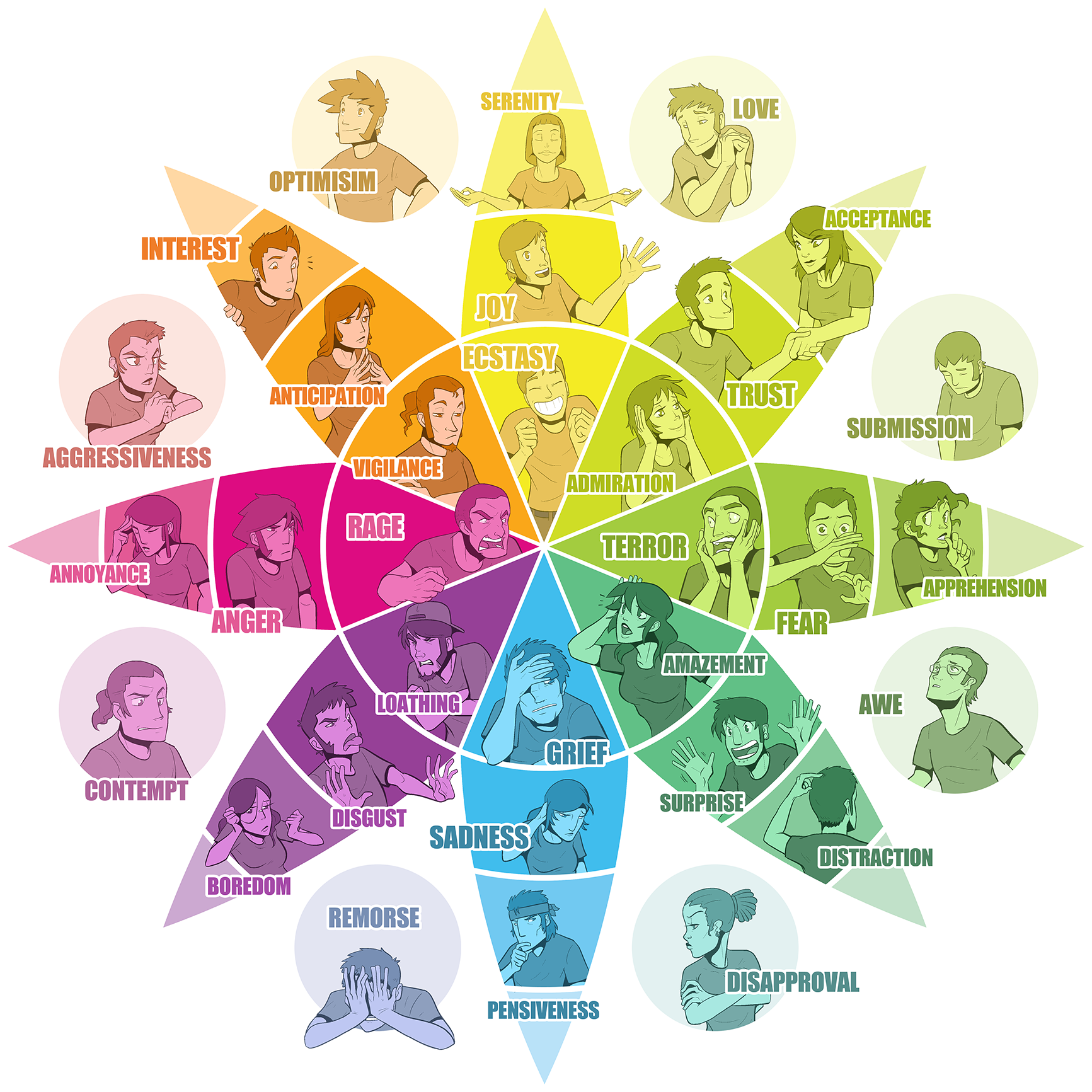How you doin'? Typology for Affective Meaning
Why compute Affective Meaning?
Applications can be Detecting:
- sentiment towards politicians, products, countries, ideas
- frustration of callers to a help line
- stress in drivers or pilots
- depression and other medical conditions
- confusion in students talking to e-tutors
- emotions in novels (e.g., for studying groups that are feared over time) Could we generate:
- emotions or moods for literacy tutors in the children’s storybook domain
- emotions or moods for computer games
- personalities for dialogue systems to match the user
Relying on language as an indicator of psychological well-being and a conduit for emotions more generally also has a long tradition in clinical psychology.
Two families of theories of Emotion
Dimensions of Emotion
Affect can vary in Valence and Arousal. Valence can be expressed in positive/pleasant or negative/unpleasant. Arousal can be expressed in strong/activated or weak/deactivated.
Plutchick’s wheel of Emotion
A list of 8 basic emotions in four opposing pairs:
The Big Five Dimensions of Personality
- Extraversion vs. Introversion
sociable, assertive, playful vs. aloof, reserved, shy - Emotional stability vs. Neuroticism
calm, unemotional vs. insecure, anxious - Agreeableness vs. Disagreeable
friendly, cooperative vs. antagonistic, faultfinding - Conscientiousness vs. Unconscientious
self-disciplined, organised vs. inefficient, careless - Openness to experience
intellectual, insightful vs. shallow, unimaginative
Scherer’s typology of affective states
Emotion: relatively brief episode of synchronized response of all or most organismic subsystems in response to the evaluation of an event as being of major significance
angry, sad, joyful, fearful, ashamed, proud, desperate
Mood: diffuse affect state …change in subjective feeling, of low intensity but relatively long duration, often without apparent cause
cheerful, gloomy, irritable, listless, depressed, buoyant
Interpersonal stance: affective stance taken toward another person in a specific interaction, coloring the interpersonal exchange
distant, cold, warm, supportive, contemptuous
Attitudes: relatively enduring, affectively colored beliefs, preferences predispositions towards objects or persons
liking, loving, hating, valuing, desiring
Personality traits: emotionally laden, stable personality dispositions and behavior tendencies, typical for a person
nervous, anxious, reckless, morose, hostile, envious, jealous
How can we model the Lexical Semantics?
- sentiment
- emotion
- personality
- mood
- attitudes
Sentiment vs. Affective Meaning 🗣
The expansion of the area of Sentiment Analysis has resulted in a new interest in the quantification of opinion, sentiment, affect, feeling, emotion, personality, mood and attitude. These terms are often used interchangeably.
We differentiate sentiment from affective meaning based on their duration. Sentiment lives longer, while an affective state has a short term duration. An effective sentiment analysis system is one which captures the sentiment of the opinion about an entity. The recognition of Affective Meaning is for example the automatic discovery of an emotional reaction, often of a single person. Unlike opinions, emotions are short-term.
Also read our post on understanding Sentiment Analysis
